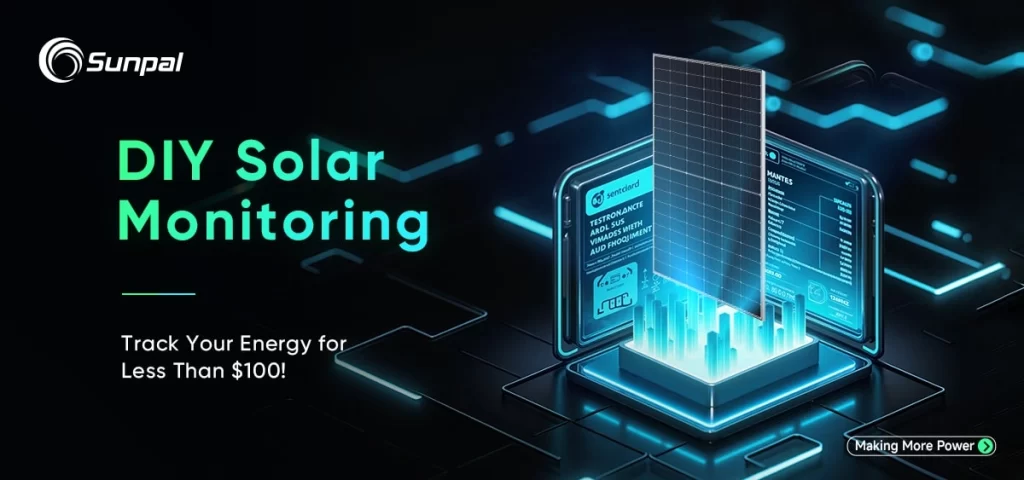
As solar energy continues to gain popularity, the demand for effective and affordable DIY solar power system monitoring has skyrocketed. Monitoring is essential for maximizing the performance of your solar setup—tracking energy production, consumption, and identifying issues early on. However, commercial solar monitoring systems often come with high price tags, making them less accessible for many solar power owners.
The solution? A DIY solar power system monitoring setup that costs under $100, combining cutting-edge smart technology with a budget-friendly approach. Whether you're a DIY enthusiast or simply looking for an affordable way to optimize your solar energy system, building your own smart dashboard is the perfect project to take control of your solar system’s performance.
Why DIY Solar Power Monitoring is a Game-Changer
Bridging the Gap Between Expensive Commercial Solutions and Basic Tools
For many solar users, commercial monitoring systems can feel out of reach due to their high costs—ranging from $500 to $2,000 or more. These systems typically offer advanced features, but many residential and small business users may not need all of them. Instead, they seek a simpler, more affordable solution for basic system monitoring.
Enter the DIY approach. With a minimal investment and some basic technical skills, you can create a custom solar power monitoring dashboard for under $100. This solution offers all the essentials, such as real-time energy tracking and system fault detection, without the hefty price tag of commercial systems.
Chart 1: Comparing the Costs of Solar Monitoring Systems

The Power of Smart Technology in Solar Monitoring
Smart technology has revolutionized how we interact with energy systems, and solar monitoring is no exception. With tools like Raspberry Pi, Arduino, and open-source software, anyone can now create a smart solar dashboard. Here's how it works:
- Affordable Smart Devices: Devices like Raspberry Pi and Arduino provide an inexpensive yet powerful foundation for your DIY solar monitoring system. By integrating sensors that track solar output, energy consumption, and voltage, you can gather real-time data that helps optimize the performance of your solar panels.
- Easy Integration with IoT: The Internet of Things (IoT) has made it easier than ever to connect devices. With DIY solar monitoring, you can link your solar power system to smart devices, allowing you to monitor performance remotely from your smartphone or tablet.
Chart 2: Smart Technology Tools for DIY Solar Monitoring

Building Your Own Solar Power Monitoring System
Now that you know why DIY solar monitoring is a practical and cost-effective solution, let's dive into the steps to create your own monitoring dashboard.
Step 1: Gather the Necessary Components
Here's what you'll need:
- Raspberry Pi or Arduino: Your system's brain, which collects and processes data.
- Solar Power Sensors: These sensors will measure the solar system's output, voltage, and current.
- Display Screen: A simple LCD or touchscreen to display the data.
- Cables and Connectors: Ensure you have all the necessary cables for connections.
Step 2: Connect Your Solar Power Sensors
Once you've assembled your components, connect the solar sensors to the Raspberry Pi or Arduino. These sensors will collect vital data about your solar system's energy production and efficiency.
Step 3: Program the Dashboard
Next, use free or open-source software like Solar-Log or OpenEnergyMonitor to program your monitoring dashboard. This will allow your Raspberry Pi or Arduino to read the data from the sensors and display it on the screen. You can even integrate the system with a mobile app to access your solar power stats remotely.
Step 4: Set Up Alerts for Maintenance and Faults
Custom alerts will notify you of any drop in performance, such as when your system isn't generating enough power or if there's a fault with the panels. This ensures timely intervention and minimizes the risk of long-term damage.
Chart 3: Key Metrics to Track with Your Solar Dashboard

Why DIY Solar Monitoring Makes Sense
Optimize Your Energy Efficiency
With a DIY solar monitoring system, you gain valuable insights into how your solar system is performing. Real-time data allows you to make smarter decisions about energy usage, optimize your energy storage (if you have batteries), and identify opportunities to reduce waste. Over time, this can lead to significant savings on your energy bills.
Empower Yourself with Data
Having access to detailed data empowers you to take control of your solar energy use. Whether you want to monitor peak energy production hours, reduce consumption during low-output periods, or troubleshoot issues before they escalate, your DIY solar monitoring system makes it all possible.
Save Money on Commercial Systems
Building your own monitoring dashboard allows you to save hundreds or even thousands of dollars compared to purchasing a commercial monitoring system. This budget-friendly approach appeals to a broad audience, from homeowners looking for entry-level solutions to seasoned DIY enthusiasts eager to explore solar power technology.
Empowering Solar Users with Smart Monitoring Solutions
As the solar industry continues to evolve, more users are seeking ways to take control of their energy usage. DIY solar power monitoring provides an affordable, customizable solution that fills the gap between expensive commercial systems and basic tools. By integrating smart technology, it's possible to have a real-time, actionable view of your solar system's performance, without breaking the bank.
At Sunpal Energy, we're committed to helping you optimize your solar power system. Whether you're just getting started with solar energy or looking for ways to improve your existing setup, our range of products and resources can guide you on your journey toward cleaner, more efficient energy.
